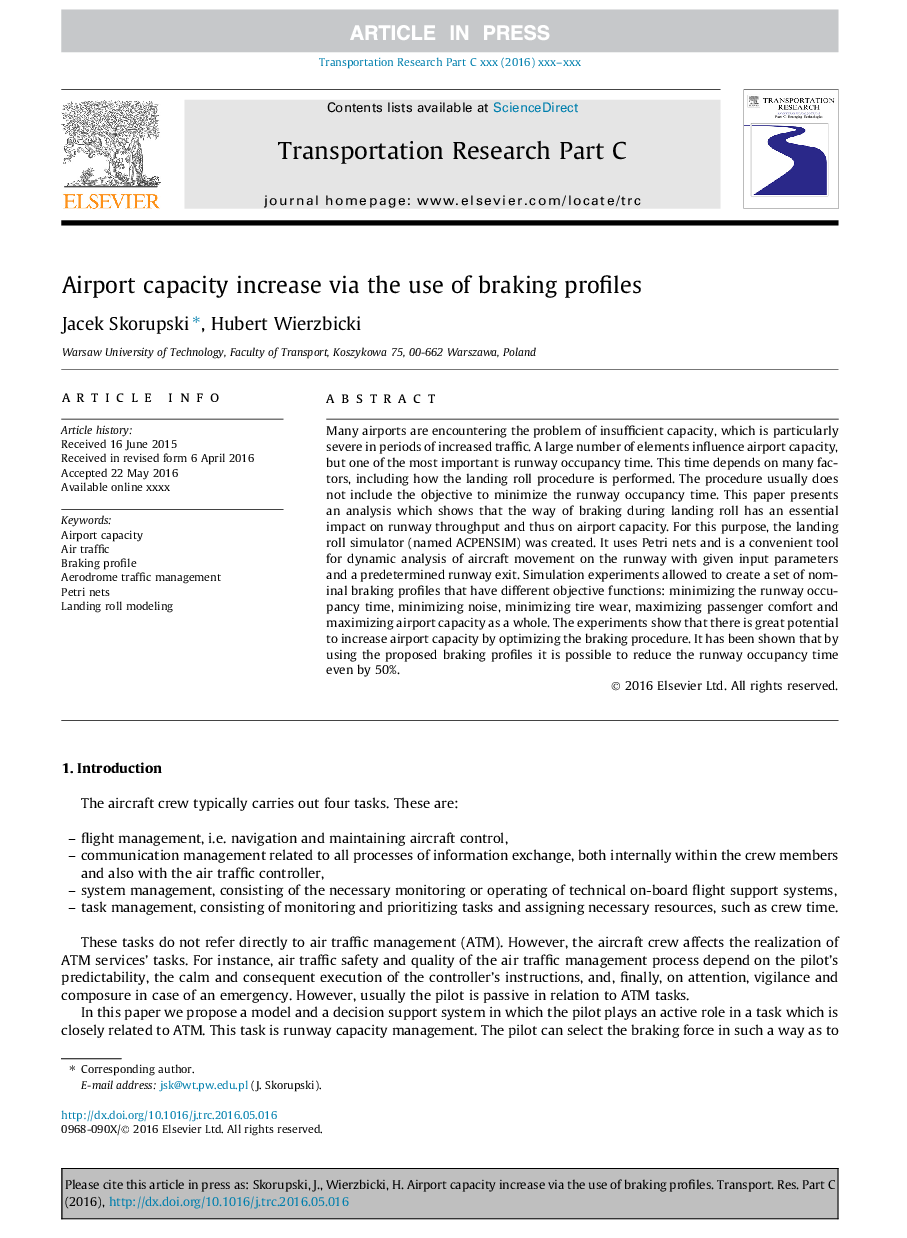| Article ID | Journal | Published Year | Pages | File Type |
|---|---|---|---|---|
| 4968442 | Transportation Research Part C: Emerging Technologies | 2017 | 18 Pages |
Abstract
Many airports are encountering the problem of insufficient capacity, which is particularly severe in periods of increased traffic. A large number of elements influence airport capacity, but one of the most important is runway occupancy time. This time depends on many factors, including how the landing roll procedure is performed. The procedure usually does not include the objective to minimize the runway occupancy time. This paper presents an analysis which shows that the way of braking during landing roll has an essential impact on runway throughput and thus on airport capacity. For this purpose, the landing roll simulator (named ACPENSIM) was created. It uses Petri nets and is a convenient tool for dynamic analysis of aircraft movement on the runway with given input parameters and a predetermined runway exit. Simulation experiments allowed to create a set of nominal braking profiles that have different objective functions: minimizing the runway occupancy time, minimizing noise, minimizing tire wear, maximizing passenger comfort and maximizing airport capacity as a whole. The experiments show that there is great potential to increase airport capacity by optimizing the braking procedure. It has been shown that by using the proposed braking profiles it is possible to reduce the runway occupancy time even by 50%.
Related Topics
Physical Sciences and Engineering
Computer Science
Computer Science Applications
Authors
Jacek Skorupski, Hubert Wierzbicki,
